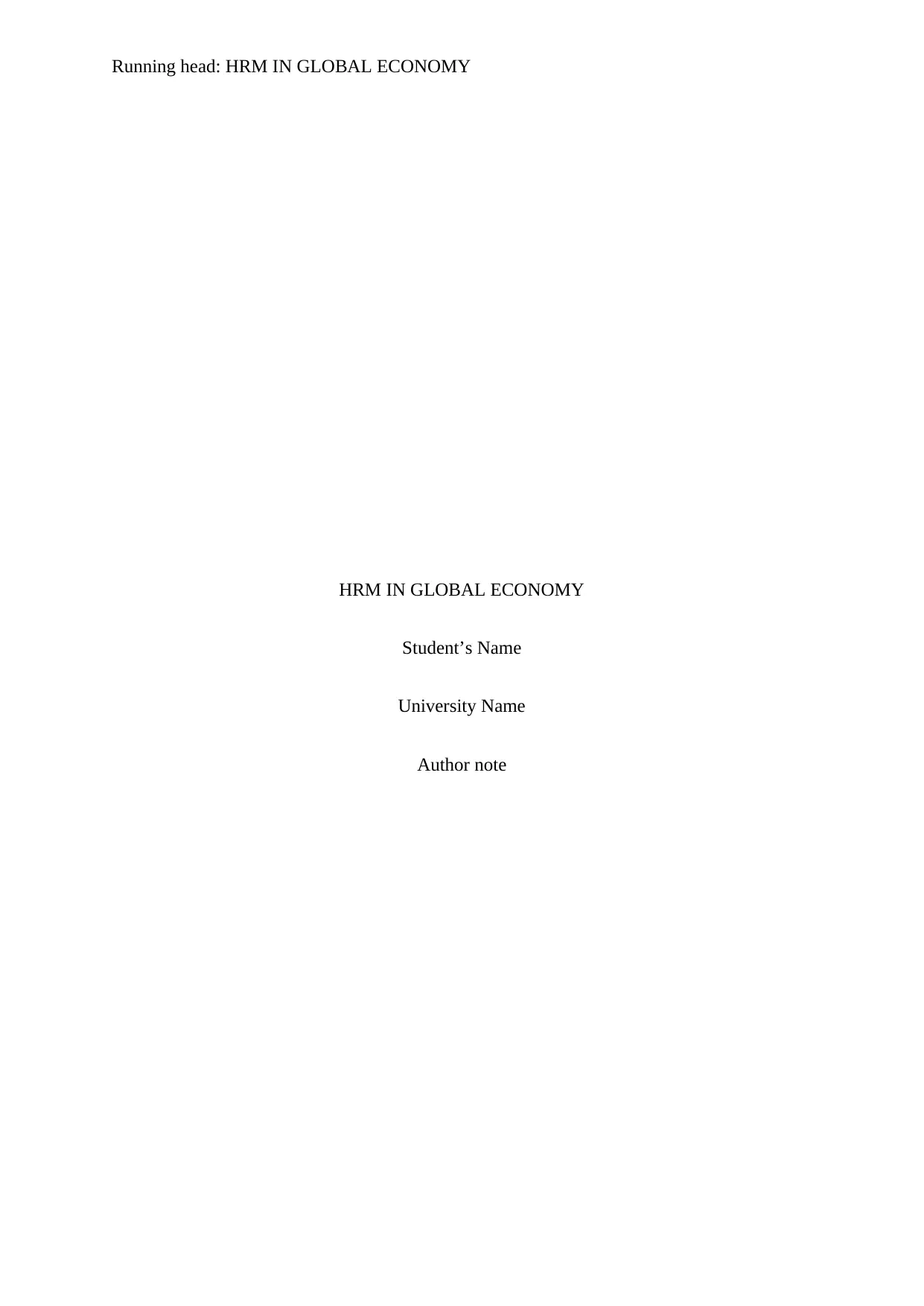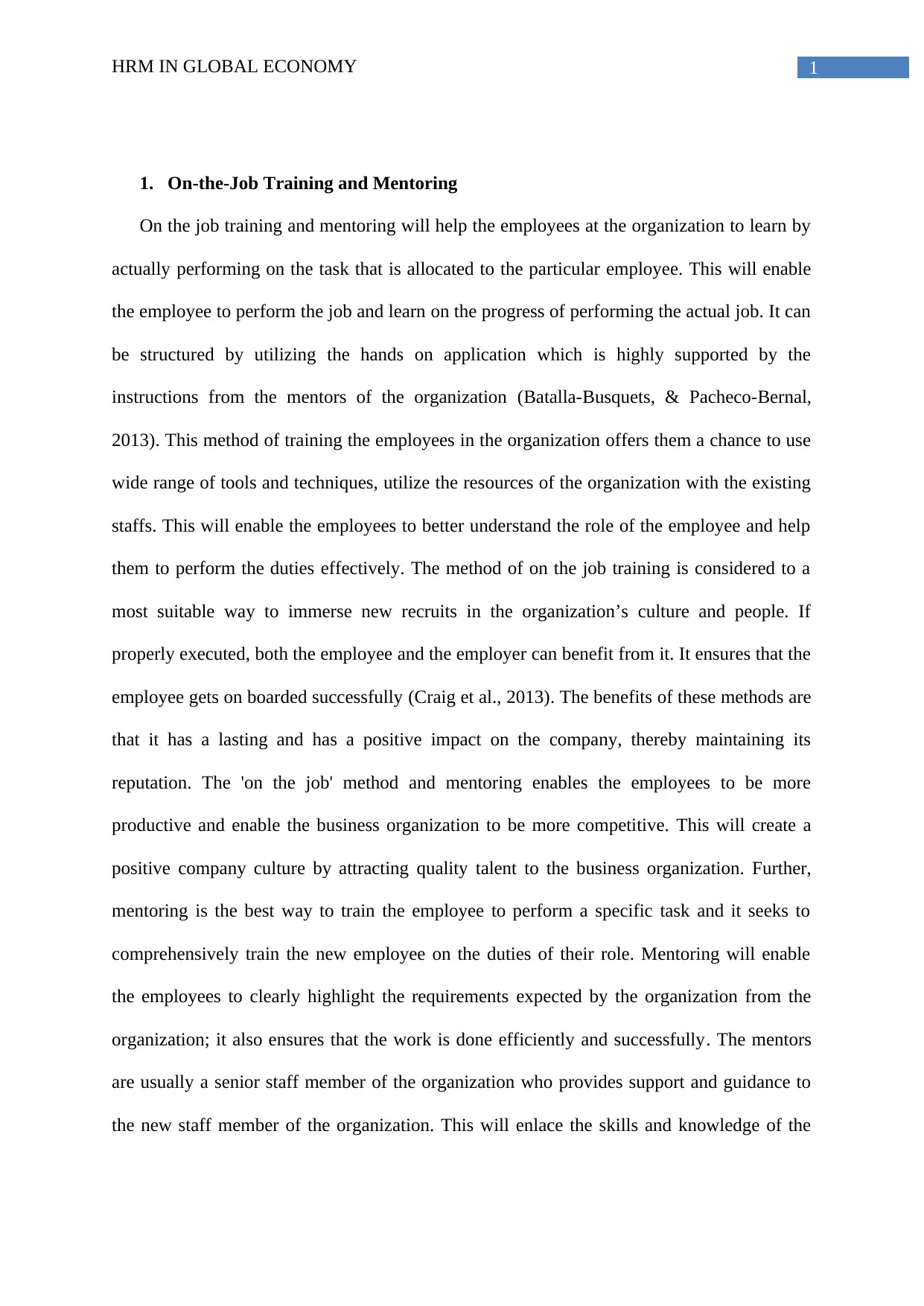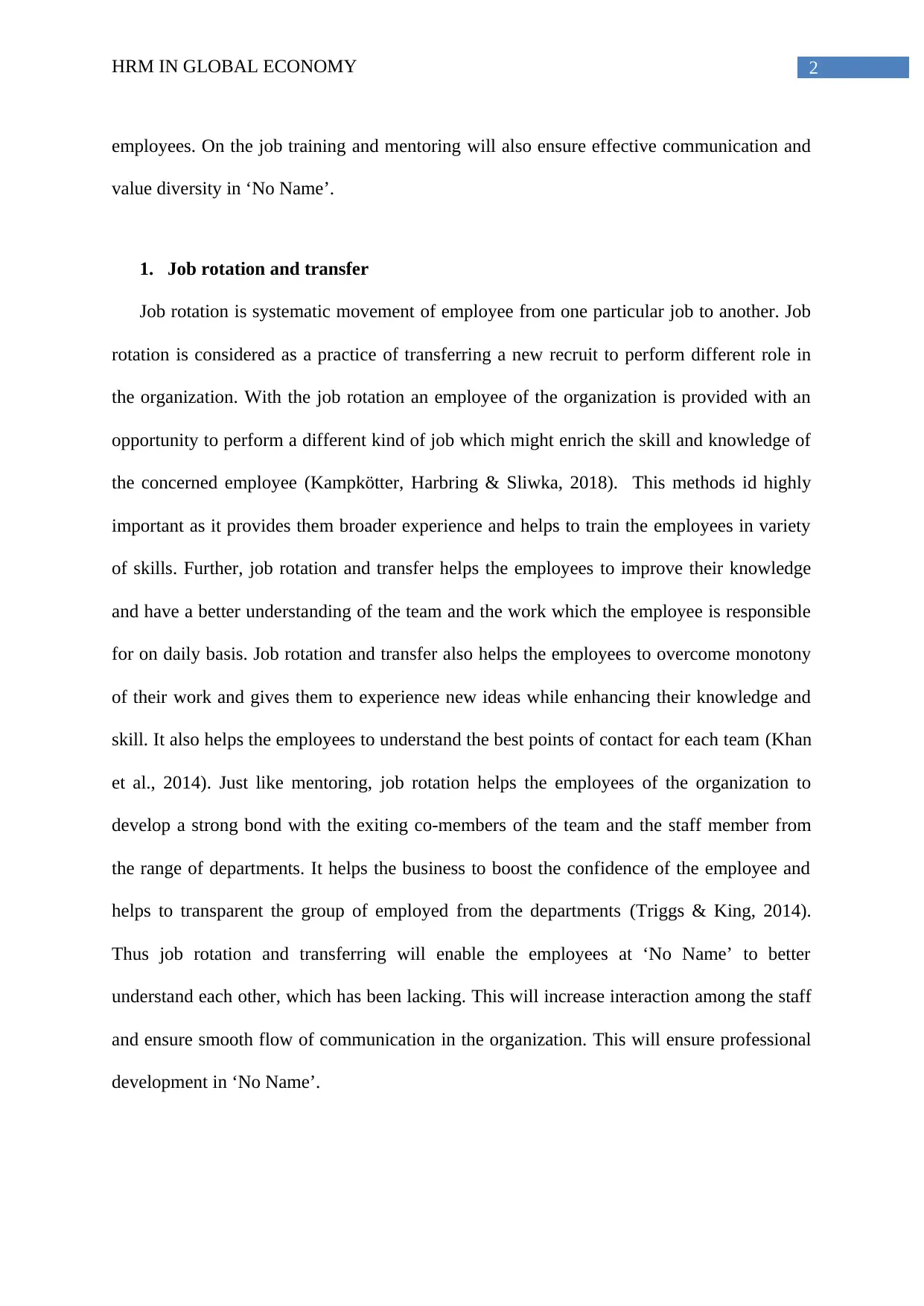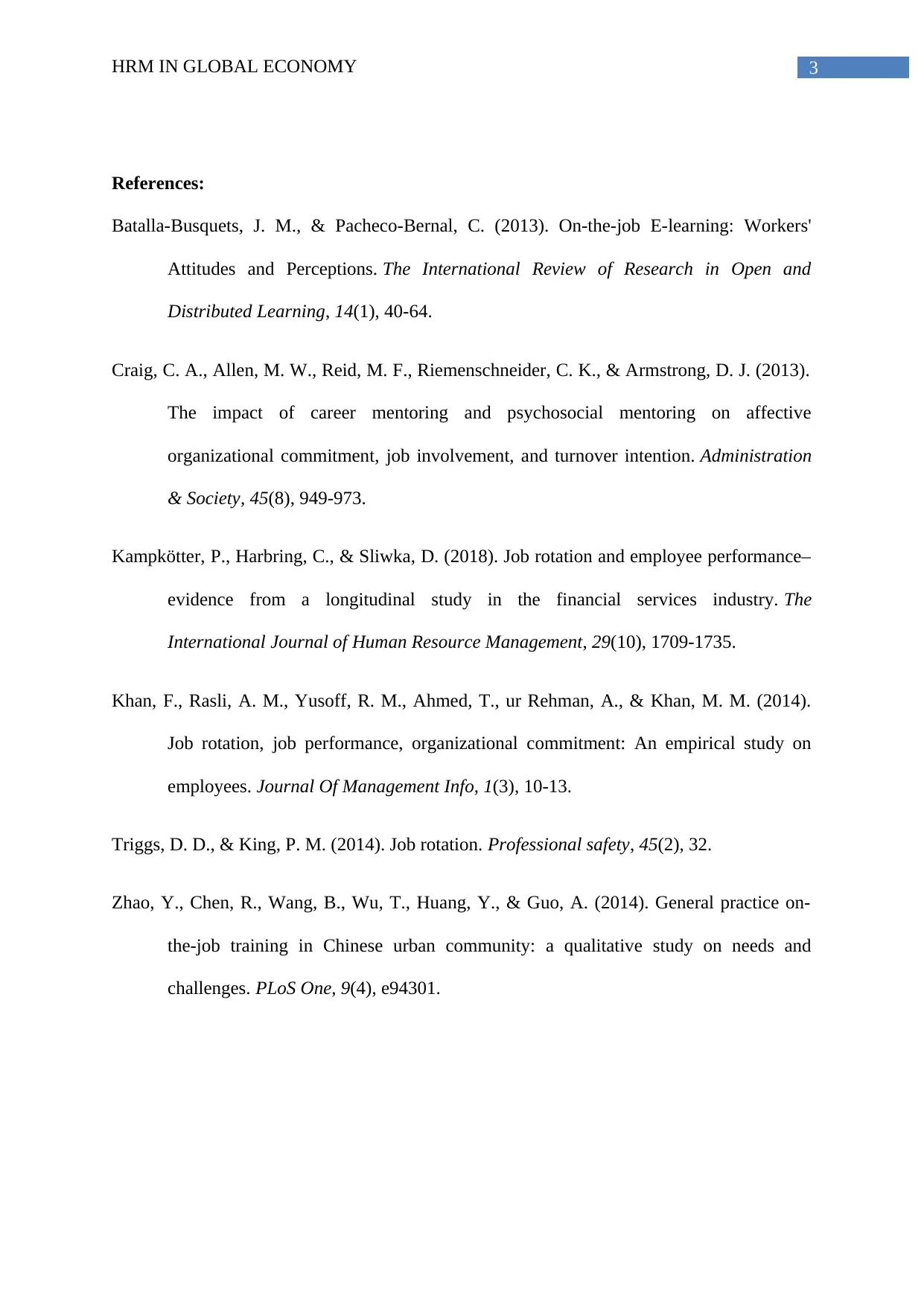Improving HRM: No Name Aircraft Case Study Analysis
VerifiedAdded on 2023/01/11
|4
|1016
|100
Case Study
AI Summary
This case study examines the HRM challenges faced by 'No Name' Aircraft, an international company with subsidiaries in multiple countries. The CEO, concerned about profitability and potential takeover, seeks to improve shareholder return. The company struggles with a negative culture, communication breakdowns, and resistance to change. The assignment focuses on HRM strategies to address these issues, specifically highlighting on-the-job training, mentoring, job rotation, and transfer as key solutions. The analysis emphasizes the benefits of these approaches, including enhanced employee skills, improved communication, and a more positive company culture. The study explores how these strategies can be implemented to improve employee engagement, productivity, and overall organizational effectiveness. The recommendations aim to foster a more collaborative and efficient work environment, ultimately increasing the company's competitiveness and safeguarding its future.
1 out of 4










![[object Object]](/_next/static/media/star-bottom.7253800d.svg)